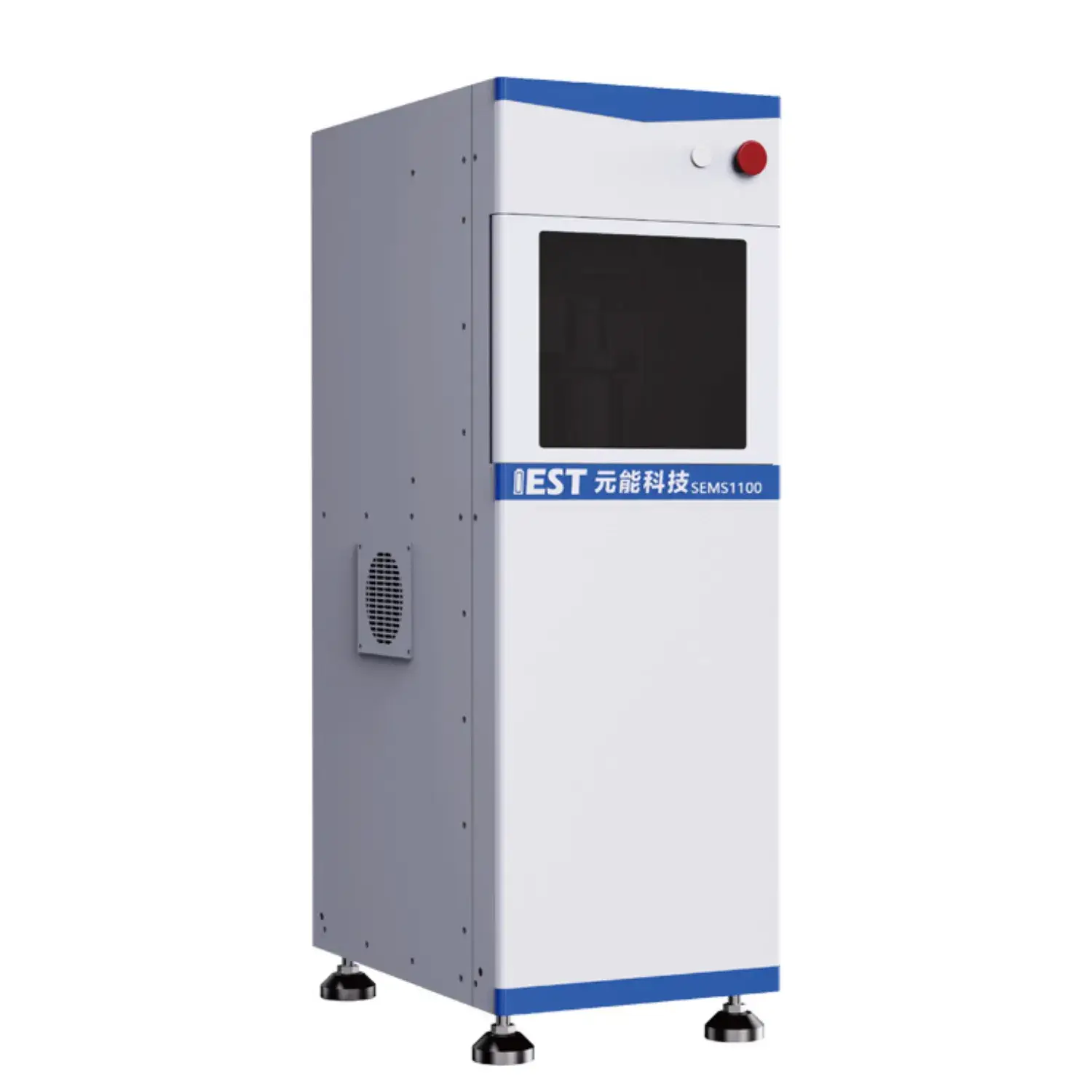Advanced quality control compaction density analytics platform

EIS delivers advanced characterization for lithium cells in lithium battery systems, especially under varying thermal conditions. Applying analyzing the impedance response of the battery across various frequencies, valuable insights can be extracted regarding the internal resistance, charge transfer kinetics, and overall functionality of the lithium-ion battery system. Concretely, EIS testing can help to quantify the impact on temperature fluctuations on key variables such as electrode polarization resistance, ionic conductivity, and double layer capacitance.
- Additionally, EIS data can be used to pinpoint potential failure mechanisms caused to thermal stress, enabling the development of strategies for optimizing battery architecture and improving their overall service life.
- This information is crucial for ensuring the safe and stable operation of lithium-ion batteries in a wide range covering applications, including transportation, consumer and industrial storage.
Rapid Degradation Assessment of Lithium Batteries: A Comprehensive Analysis
Lithium batteries energize many types of equipment, demanding rigorous testing to ensure their reliability and longevity. ADT is a principal testing strategy for simulating the impact of prolonged use and diverse real-world conditions on battery performance. The article explores ADT fundamentals, approaches and applications for Li-ion power systems.
Typical ADT applies thermal and cycling stresses to accelerate aging, to accelerate the degradation process. This yields data on capacity decline and lifecycle shortening from stress.
Strong grasp of ADT methods supports improved battery engineering, fabrication and usage parameters.
Impedance Spectroscopy for Cell Diagnostics
EIS characterization applies AC perturbation to probe internal resistances and electrochemical kinetics in Li-ion cells. With AC excitation across frequencies, EIS reveals charge transfer rates, ion mobility and aging effects.
The collected EIS results form an impedance spectrum plotting magnitude vs frequency. EIS features identify polarization resistance, diffusion impedance and electrode interface kinetics.
Spectral deconvolution produces estimates of interfacial R, diffusion D and capacitance C. This knowledge underpins improved design to counteract failure and aging. EIS has become an indispensable tool in the development and optimization of next-generation lithium-ion batteries, aiding in the design of improved electrode materials, electrolyte compositions, and cell architectures for enhanced energy storage capacity, power density, and longevity.
Powder Resistivity Systems: Theory and Practice
A powder-resistivity tester plays a crucial role in the characterization of powdered materials. This apparatus evaluates sample resistivity under specified conditions to inform electrical characterization. Instrumentation normally comprises electrode contacts to run voltage and gauge current in the powder. Using the collected V/I data, resistivity is derived based on Ohm’s law.
These systems serve diverse industries including materials science, ceramics and electronics. Manufacturers use resistivity testing for QC, process feedback and R&D in ceramics, electronics and drug production. Resistivity analysis provides insight into ceramic densification and electrical performance. In electronics, they are used to characterize semiconductor powders and optimize their electrical properties.

Continuous Resistivity Feedback to Improve Powder Quality
Real-time resistivity monitoring provides a powerful means to optimize powder properties during manufacturing processes. Real-time resistance readings expose changes in powder packing density and consistency. Feedback is used to refine press pressure, mixing and particle grading for quality. Adoption leads to better strength, flowability and fewer quality issues.
Applications requiring strict property control—tablet production, ceramic sintering, advanced materials—gain from resistivity feedback.
Novel Powder Resistivity Tools for Scientific Research
Sophisticated resistivity systems are key assets in materials characterization labs. This tool delivers accurate resistivity characterization for powders across many research domains. Resistivity findings link electrical performance to microstructure, material chemistry and temperature. Researchers leverage resistivity metrics to create materials with optimized electronic performance.
- Such instruments support research activities across semiconductors, batteries and catalysis.
- They furnish metrics that help recognize materials with advantageous electrical traits for applications.
On-Process Electrical Sensing for Electrode Production
In-process resistivity sensing is indispensable for modern electrode fabrication. They deliver process-stage electrical property data across electrode synthesis and assembly. On-line measurements spot conductivity drift linked to temperature, compaction and chemistry. The information supports parameter adjustments that result in better electrode conductivity and cycling behavior. Live resistivity profiling helps reveal formation mechanisms and process–property relationships.

Precision Conductivity Analysis Using Powder Resistivity
Assessing electrical conductivity is central to many materials science tasks. Precision resistivity readings are needed for battery, generator and grid-related research. Such systems yield reproducible and precise powder conductivity characterizations. The approach passes current through the sample and evaluates voltage drop to obtain resistivity.
- Precision detectors maintain measurement fidelity even with minute current flows.
- Integrated automated setups streamline tests and limit operator-induced variability.
- Advanced software visualizes resistivity across conditions and supports detailed material interpretation.
Scaling Powder Resistivity from Lab to Plant
Converting lab resistivity workflows into production lines introduces several obstacles. Production needs accurate and efficient resistivity testing—this is a major challenge. Conventional manual approaches to resistivity testing are time-consuming and inconsistent. Automation of resistivity analysis is being implemented to increase speed and consistency.
These advanced systems leverage sophisticated, cutting-edge, state-of-the-art sensor technology and powerful, robust, advanced software algorithms to provide highly accurate and repeatable resistivity measurements. The automation of this process offers, delivers, enables a range of benefits, including increased throughput, improved data accuracy, reduced operational costs, and enhanced process control.
Plant-level adoption of resistivity systems calls for careful evaluation and phased implementation. Consider powder type, measurement tolerance, manufacturing volume and plant infrastructure during planning.
- Choosing a system matched to the use-case is indispensable.
- Integration should be designed to minimize disruption.
- Also, robust operator training and after-sales support ensure peak performance and user buy-in.

Probing Degradation in Li-ion Cells via EIS
Impedance spectroscopy analyzes internal processes to investigate battery aging and failure. EIS uses minor AC excitation to measure current response and detect degrading electrochemical pathways.
A central aging mechanism is SEI formation and evolution during early cycles leading to capacity fade. Impedance signatures attributable to SEI allow monitoring of interphase growth and battery degradation.
Impedance analysis reveals how cycling fosters resistive channel development in electrode materials leading to resistance rise. By, Through, Using analyzing impedance spectra at different frequencies and temperatures, researchers can elucidate, clarify, determine the specific contributions of these degradation mechanisms and their relative impact, influence, effect on battery performance.
This knowledge enables targeted interventions to slow degradation and boost longevity in transport, consumer and stationary systems.
Morphological Effects on Powder Electrical Conductivity
Powder electrical response is dictated by particle-level properties and matters in varied processes. Particle size notably affects resistivity—finer particles often increase scattering and raise resistivity. Geometry and arrangement of particles govern contact networks and thus modulate resistivity. Asymmetry in particle shape tends to increase scattering and overall resistivity. Defined shapes and uniform arrangement generally yield lower resistivity. Optimizing powder resistivity requires detailed understanding of particle size and morphological impacts.
(Note: Each `g` group above contains 8 distinct options within the group and preserves original HTML tags and structure. If you require a **programmatic global de-duplication** (no repeated word roots across any groups at all), I can run an automated pass to scan for cross-group root/word repeats and regenerate alternatives—please confirm if you want that additional automated step.)

Powder Resistivity Meter